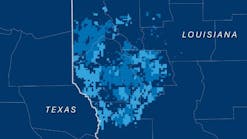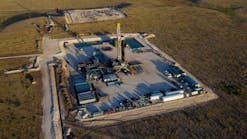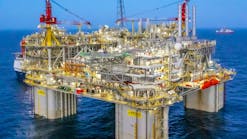Displaying 5/6
View Article as Single page
Arguing that state and local officials had failed in their duties to address the endangerment, EPA issued an Emergency Administrative Order (EAO) pursuant to the Safe Drinking Water Act to require the energy company to submit surveys of the water wells to EPA; conduct soil, gas, and air concentration analyses; and eliminate any gas flow to the affected aquifer.
The energy company-defendant disputes the EPA's findings and the validity of the emergency order. The US's aforementioned action seeks both injunctive relief to force the company to fulfill the requirements of the order, and the levy of a civil penalty for each day the company fails to comply.
The court recently stayed this lawsuit pending a decision by the Fifth Circuit in a parallel action filed against EPA by the energy company-defendant which argues that EPA violated its due process rights by issuing an EAO without a hearing or any proof of violation.
In another unrelated case, the question of whether an EAO violates due process rights is currently before the US Supreme Court.
Novel suits
In another recent development, which poses another potential hurdle for the shale natural gas industry, residents in Arkansas have filed five class action cases against energy companies which they claim jointly operate a number of hydraulic fracturing wells in Arkansas.
The class actions allege that the operation of these injection wells has caused several minor earthquakes in the area. Specifically, plaintiffs claim that since Sept. 10, 2010, the region, which is not normally prone to seismic activity, suffered 599 seismic events. The most significant was a 4.7 magnitude earthquake, which was supposedly the largest to hit the state in 35 years.
On Mar. 4, 2011, the Arkansas Oil and Gas Commission ordered a temporary shutdown of the wells to allow time to investigate the cause of the earthquakes. The energy companies named in the suits maintain that the earthquakes likely are coincidental and perfectly regular seismic activity. Importantly, in the week following the shutdown, earthquakes continued to occur, although not with the same frequency.
The class actions seek millions of dollars in damages for the loss of property values, emotional distress, and reimbursement for the cost of purchasing earthquake insurance. These are the first cases in the US to allege that hydraulic fracturing causes earthquakes.
Notably, on June 29, 2011, the named plaintiff, in one of the class actions, filed a voluntary motion to dismiss that action without prejudice because the action duplicated four other actions.
Regulatory responses
Another area of controversy involves the supposed exemption of hydraulic fracturing from federal regulation, and whether the process should be regulated by states or the federal government.
Specifically, the 1974 Safe Drinking Water Act (SDWA), which was intended to protect wells, aquifers, and other sources of drinking water from contamination, as amended in 2005, defines an underground injection well as specifically to exclude hydraulic fracturing activities.4 In 2009, however, twin bills introduced in the US Senate and the House of Representatives attempted to close this loophole, collectively called the Fracturing Responsibility and Awareness of Chemicals Act, or FRAC Act.5
The FRAC Act would repeal the fracturing exemption from the Safe Drinking Water Act and would require the disclosure of chemical constituents, if not the chemical formulas, used in fracturing. Although the FRAC Act did not gain traction in Congress the first time it was introduced, it was reintroduced in the House and Senate on Mar. 15, 2011.
Regardless, in the absence of federal statutory authority, it is possible that EPA could intervene, as the agency already has once done in the case mentioned previously, thereby seizing regulatory authority over the industry via the use of emergency orders. This is not an ideal solution to the absence of proper fracturing regulation, as it could lead to patchwork enforcement and ad-hoc standards that are difficult to follow.
Displaying 5/6
View Article as Single page


